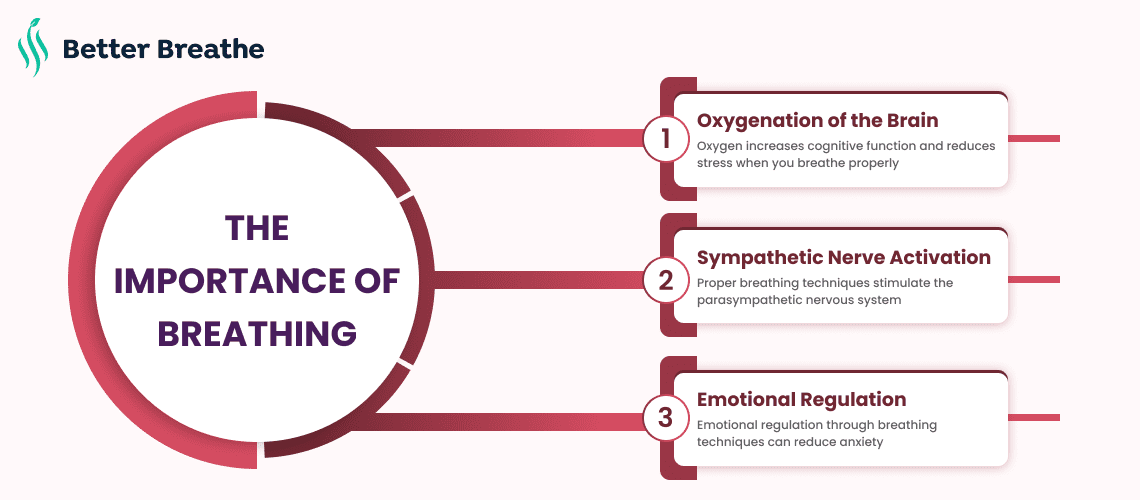
Our fast-paced world can easily overwhelm us with the pressures of everyday living. Anxiety, stress, and tension can negatively impact our mental and physical health. Despite the chaos, one simple yet powerful tool can help us find peace and tranquility: guided breathing exercises. As we focus on the breath, we can find a path to calmness, allowing us to alleviate anxiety and center ourselves. You can incorporate guided breathing exercises into your daily routine to manage stress effectively with better breathing.
Anxiety is a common companion for many people in this chaotic world that we live in. But what if we told you that one of the most effective tools to combat anxiety is right under your nose—literally? In this comprehensive guide, we will understand how breathing helps to reduce anxiety. From the science behind it to practical Breathing Techniques, we'll cover it all.
Whether you prefer the simplicity of box breathing, the rhythmic pattern of 4-7-8 breathing, or the combination of progressive muscle relaxation and breathing, these techniques allow you to achieve tranquility despite life's challenges. Taking time every day to breathe deeply and nourish your well-being can assist in cultivating a greater sense of calm in the face of difficulty. Next time you feel overwhelmed, remember to pause, breathe deeply, and allow guided breathing to guide you back to peace.

Breathing is the fundamental rhythm of life, and it plays a pivotal role in maintaining our physical and mental well-being. Here's how it impacts anxiety:
Proper Breathing ensures a steady supply of oxygen to the brain, improving cognitive function and reducing stress.
Deep mindful breathing stimulates the parasympathetic nervous system, which counteracts the "fight or flight" response, promoting relaxation.
Breathing techniques can help regulate emotions, making it easier to manage anxiety-inducing situations.
There are several effective breathing techniques to alleviate anxiety:
Also known as "Belly Breathing," this technique involves deep breaths that expand the diaphragm, promoting relaxation.
Box Breathing is a simple but powerful method that involves inhaling, holding, exhaling, and pausing for equal counts, calming the mind.
This 4-7-8 Breathing technique consists of inhaling for four counts, holding for seven counts, and exhaling for eight counts—a natural tranquillizer.
A yogic technique, Alternate Nostril Breathing balances the brain hemispheres, reducing stress and enhancing focus.

Understanding the science behind how Breathing Reduces Anxiety is crucial. Anxiety often triggers a "fight or flight" response, flooding the body with stress hormones. Controlled breathing acts as a natural antidote:
Deep slow breaths reduce cortisol levels, the body's primary stress hormone.
Proper breathing improves blood circulation, ensuring that vital nutrients reach the brain and body, reducing tension.
Breathing techniques strengthen the mind-body connection, empowering individuals to manage anxiety more effectively.
Breathing is a powerful tool that can transform the way you manage anxiety. By understanding the science behind it and regularly practising various breathing techniques, you can take control of your mental well-being. So the next time you feel overwhelmed, remember: that your breath is your ally in the battle against anxiety. For further support and access to premium features, consider downloading the Better Breathe app available on both the App Store and Google Play Store.